7 Healthy Weight Gain Tips for Athletes
April 4, 2023
Learn how to help young athletes gain weight. It’s not just about high calorie foods!
I became interested in sports nutrition early in my career. I was raising young athletes of my own, and was also seeing them as a registered dietitian in private practice.
Mostly, these young athletes were coming in, and either looking for a weight gain meal plan, guidance for how to lean out and promote muscle growth, or they were looking for weight loss.
Some were showing up with an eating disorder.
Although it’s common to believe all athletes are healthy, the truth is some struggle with their health and body size.
They can be can be in a calorie surplus and overweight, or under-fuel and be too thin.
In this article, I’m reviewing how to help athletes gain weight in healthy ways.
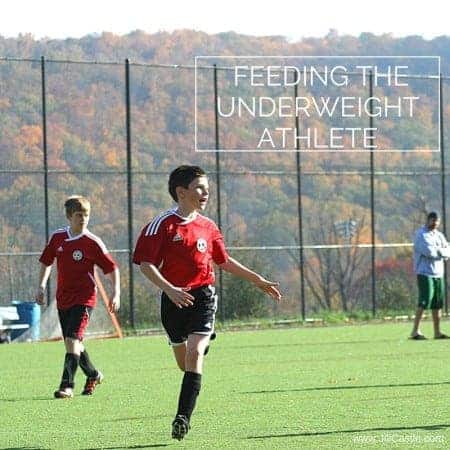
The Energy Demand of Growth and Sport
Normally, children and teens move through the natural ups and downs of growth and there’s little cause for worry.
But the growing athlete has a delicate balance to strike—matching energy needs for growth while also covering the nutritional demands of playing a sport.
For some, this will be a continuous struggle.
The rigors of regular training, high energy needs associated with growth spurts, poor eating, or a poor diet can all lead to unmet nutritional needs. Underweight athletes have a tougher time performing at their peak potential.
Normal growth for young athletes relies on eating enough food to cover the energy and nutrient demands of sport and growth. #foodisfuel #youngathletes #eatlikeachampion Click To TweetHow to Gain Weight
Feeding the young athlete who is underweight requires attention to food types, amounts, and the timing of eating.
The best way to gain weight is not to “fatten up” the athlete, but to match his energy needs for growth and sport, allowing for a healthy rate of weight gain and body composition to take shape.
The best plan for gaining weight will address not only food choices but also the structure with which the athlete eats.
Here are my 7 tips to help the underweight athlete gain weight in a healthy way:
1. Add Another Meal
Many growing athletes will do better with an extra meal added to the eating plan. This helps them cover their energy needs better, especially with consistent physical activity. Instead of three meals per day, go for four meals, plus additional snacks.
2. Offer Balanced, Nutritious Meals
A balanced meal plan that includes a variety of food groups gives nutrients consistently through the day.
Include the following types of foods at mealtime:
- Protein-rich foods (eggs, lean meats, fish, beans, etc)
- Whole grains (whole grain breads, cereals, oatmeal, etc)
- Dairy (milk, yogurt, cheese), or fortified, non-dairy substitutes
- Fruit (apple, banana, berries)
- Vegetables (green beans, carrots, corn)
- Healthy fats (olive oil, nuts, avocado, peanut butter)
Aim for offering at least 4-5 of these different food categories at each meal of the day.
Need some ideas?
Check out this breakfast for athletes PDF guide.
3. Bump Up Nutrition with Healthy Snacks
With the above food groups in mind, offer 2 to 3 of them for snack time. Create a power snack by adding a protein food, which will help satisfy the athlete’s appetite for a longer period of time, better than a carb-based snack (ie, crackers).
For example, cereal, fruit and milk, or nut butter, crackers and raisins are two examples of hearty, nutritious snacks.
I’ve got more snack ideas for the athlete! Grab a copy of my PDF guide below.
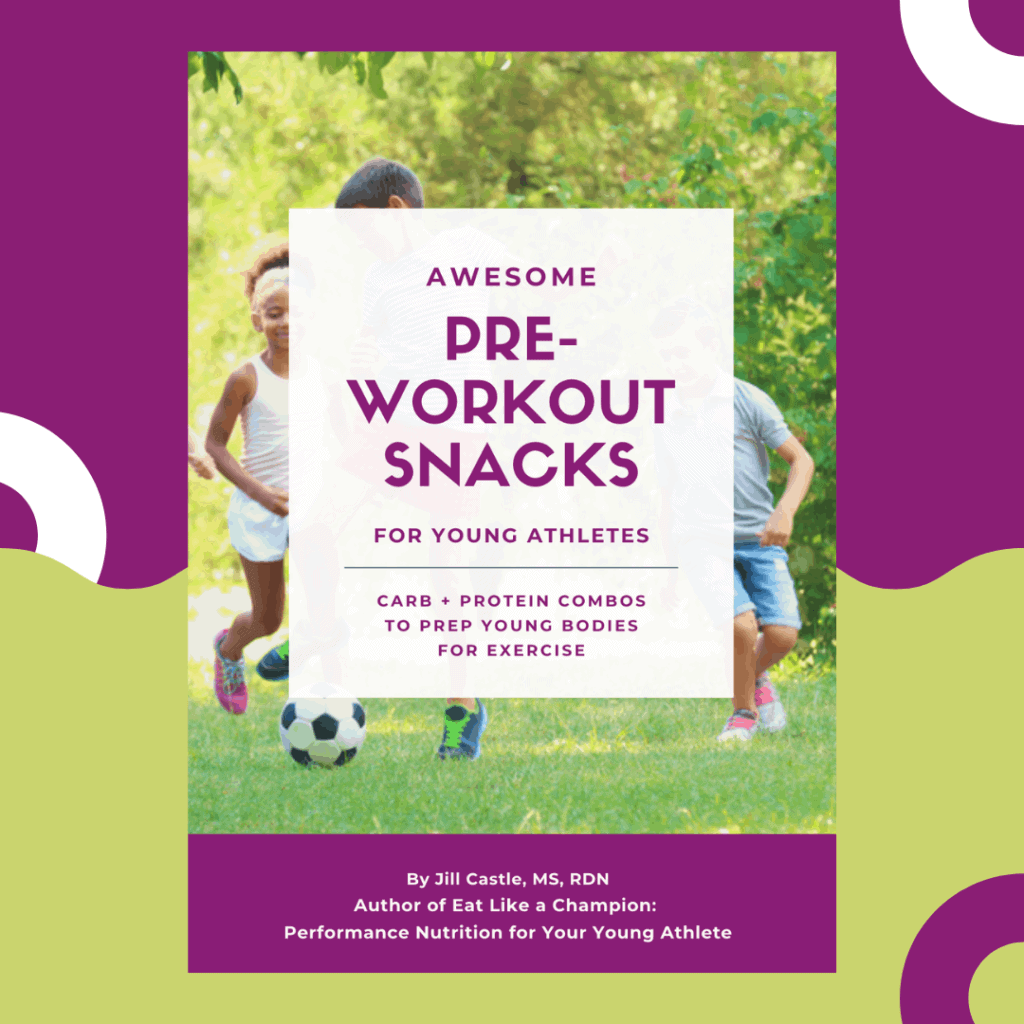
Want New Snack Ideas for Your Athlete?
4. Drink with a Purpose
Water is great for everyone, but the athlete who wants to gain weight should drink beverages with both calories and nutrition. Drinks are an easy way to down some extra calories and nutrients with milk or non-dairy substitutes like soy milk or pea protein milk, 100% juices, or fruit and yogurt smoothies.
5. Add a Bedtime Snack
Eating a snack prior to bedtime can give some additional calories that won’t be burned off while sleeping.
Try the following:
- Peanut butter toast
- Instant pudding made with whole milk
- A bowl of low sugar cereal
- A milkshake
- Trail mix
- Dinner leftovers
6. Use Good Fats to Add More Calories
Add some healthy fats to build in more calories, like nuts, seeds, avocado and olive oil.
Extra fat can ease the pressure to eat more food and large portions of food.
Here’s how you can add extra calories to food:
- Add margarine, mayonnaise, or avocado to sandwiches
- “Double-dress” cooked pasta (toss in olive oil, then top with butter or olive-oil soft spread)
- Sprinkle cheese on entrees
7. Have a Regular Time for Meals and Snacks
Working with a schedule for meals and snacks will help your athlete meet their energy needs, while optimizing appetite.
School-age athletes can eat every 3-4 hours, while teen athletes can schedule meals and snacks every 3-5 hours.
Remember, food is the fuel for athletic performance and normal growth.
When the young athlete is underweight, they need healthy weight gain goals that will ensure they match their nutritional needs for growth and sport.
When athletes who are thin or underweight are able to gain weight, they feel better, have more energy, and improve their endurance, strength and stamina!
Need More Help with Feeding Young Athletes?
If you’ve got a young athlete, check out our resources for athletes, including my book, Eat Like a Champion: Performance Nutrition for Your Young Athlete, or our online class for youth athletes, Eat Like a Champion.
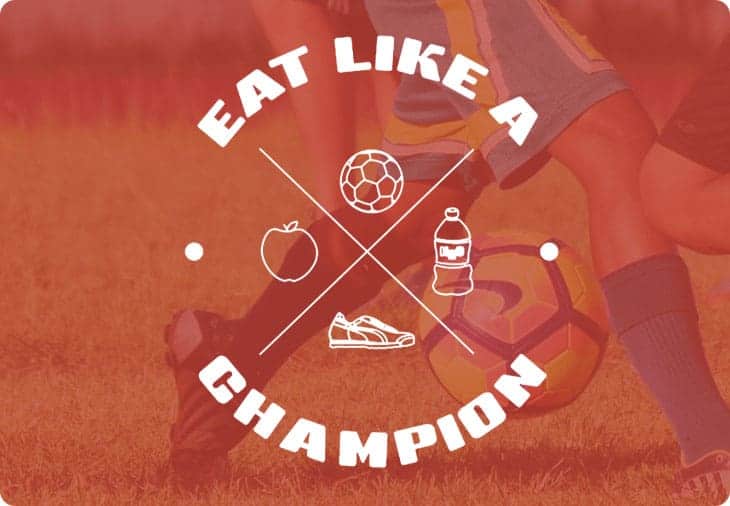
Teach your athlete about sports nutrition with Eat Like a Champion.

This article was originally published in June 2015 | Updated in October 2020.

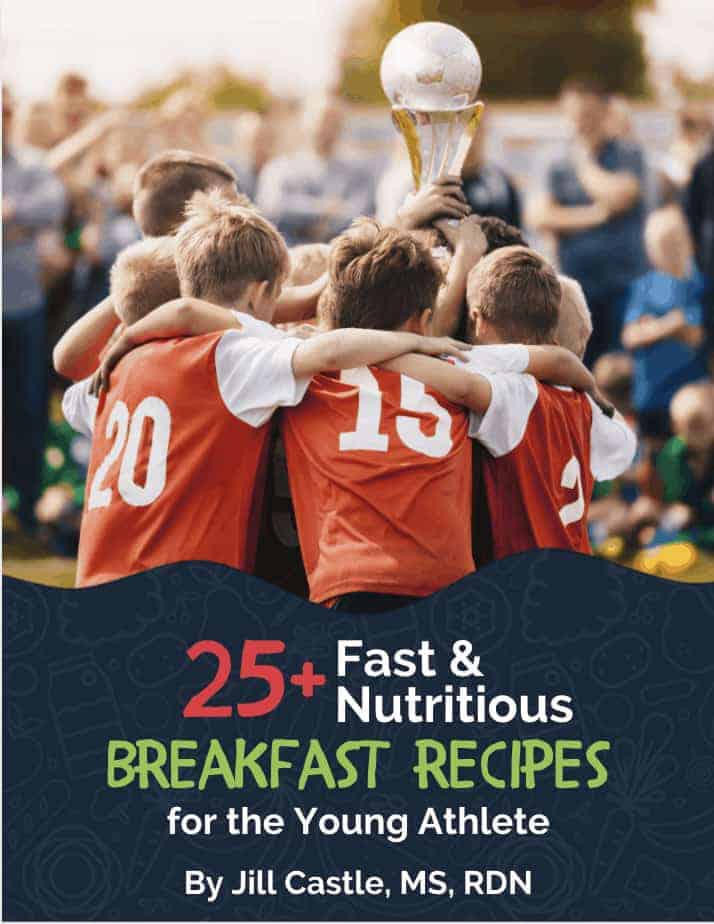


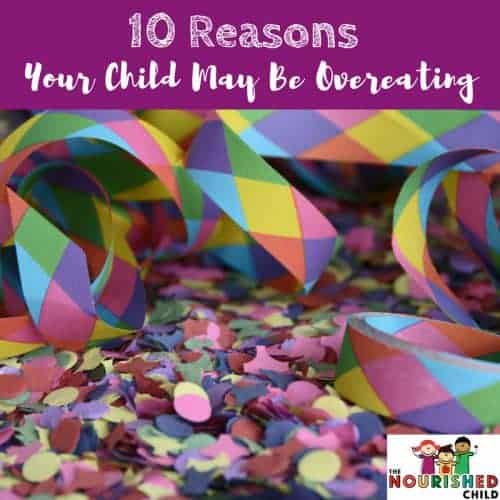

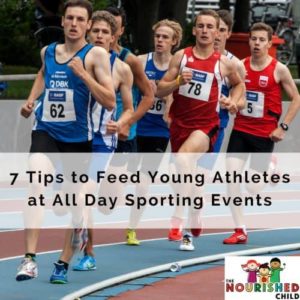
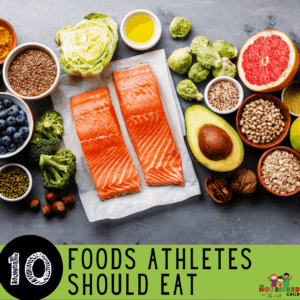
![Game Day Granola [Recipe]](https://thenourishedchild.com/wp-content/uploads/2015/11/Game-Day-Granola-e1447270901887-300x300.jpg)



